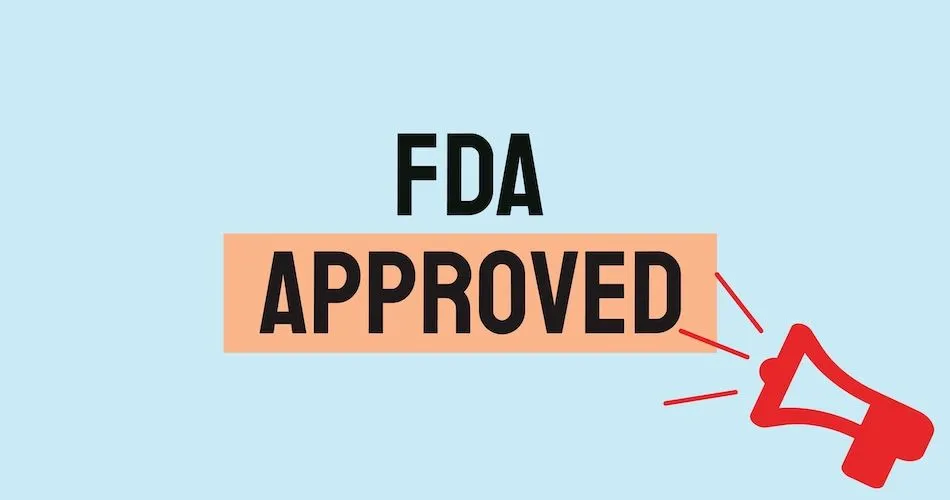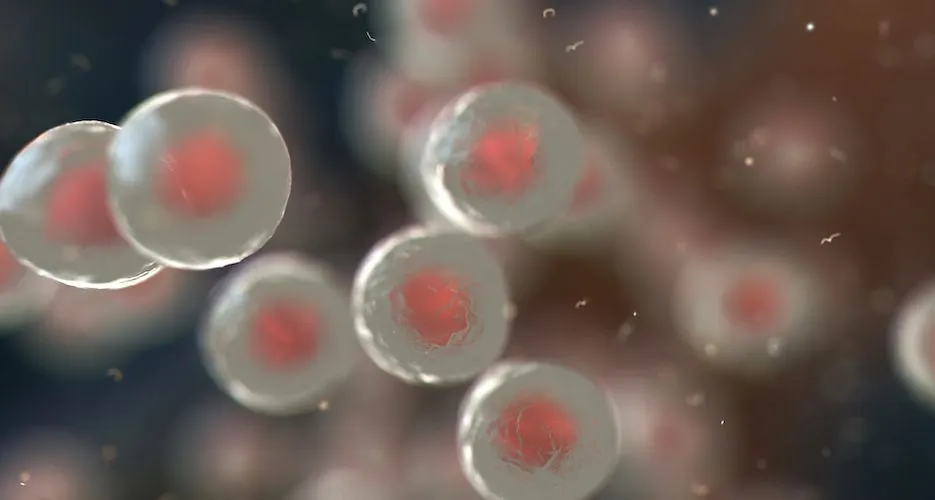Venetoclax Added to Standard Chemotherapy Shows High Response in Newly Diagnosed AML

People newly diagnosed with acute myeloid leukemia (AML) intensive chemotherapy is the recommended first-line treatment. One side effect of this treatment is bone marrow suppression. This happens because the intensive chemotherapy prevents the bone marrow from producing healthy blood cells. It can cause:
- Very low blood counts.
- Anemia.
- Increased risk of bleeding.
- Increased risk of infection.
At the 2025 European Hematology Association conference, researchers shared results from a clinical trial that studied adding venetoclax (Venclexta, AbbVie and Genentech) to a commonly used chemotherapy. This targeted therapy could help improve outcomes for people with newly diagnosed AML.
Venetoclax plus “2 + 3” chemotherapy
This study combined venetoclax, idaunorubicin (Cerubidine, Tocris Bioscience) and cytarabine (Cytosar-U, Tarabine PFS). Idaunorubicin is a type of anthracycline chemotherapy, and cytarabine is a chemotherapy that blocks DNA replication.
The regimen, called “2 + 3,” includes 2 days of idaunorubicin and 3 days of cytarabine. Patients received venetoclax for 7 to 14 days, depending on how their bone marrow responded and how well they tolerated treatment.
The goal of this approach is to find a regimen that offers high response rates while balancing the common side effects, especially related to prolonged low blood counts.
Who was treated in this study?
The study included 37 adults between ages 18 and 62 with newly diagnosed AML who were healthy enough to receive intensive therapy. More than half were men, and the median age was 49. None had been treated for AML before.
High response rates after one cycle
After just one cycle of the combination treatment, 91.9% of patients responded. A complete response (CR) meaning that the leukemia cells were no longer detectable in the bone marrow or blood. Or people achieved a complete response with incomplete blood count recovery (CRi), meaning that the bone marrow has cleared to less than 5% of leukemic blasts but the blood cell counts haven’t reached normal levels yet, this response was seen in 86.5% of patients. Most patients who achieved a complete response had no measurable residual disease (MRD). This is a sign that very few leukemia cells remained after treatment.
This level of response suggests that adding venetoclax may enhance the effectiveness of standard chemotherapy.
Side effects and blood counts
Every patient experienced low blood counts, which is expected with this type of intensive treatment. Specifically:
- Anemia (low red blood cells) occurred in 100% of patients.
- Neutropenia (low white blood cells) and thrombocytopenia (low platelets) also occurred in all patients.
Most patients saw their neutrophils recover by day 14 and platelets by day 13 after treatment. This recovery time is important, as prolonged low counts can lead to infections or bleeding.
Encouraging early survival results
The estimated 12-month overall survival (OS) was 90%, and the progression-free survival (PFS) was 79.4%. Progression-free survival is the amount of time after treatment begins when the cancer does not get worse. These results show that this combination may offer durable outcomes, though longer follow-up is needed.
A strong candidate for future AML therapies
This study shows that combining venetoclax with a shortened, intensive chemotherapy regimen (2 + 3) is both active and manageable for patients with newly diagnosed AML. The high rate of complete responses and acceptable safety profile make it a combination worth further investigation.
The addition of venetoclax to idaunorubicin and cytarabine resulted in high response rates and manageable recovery times. This approach could offer a more effective frontline option for newly diagnosed AML patients.
To learn more about treatment combinations being studied for AML, visit HealthTree’s AML News Site or browse through personalized search with our Clinical Trial Finder.
Source:
People newly diagnosed with acute myeloid leukemia (AML) intensive chemotherapy is the recommended first-line treatment. One side effect of this treatment is bone marrow suppression. This happens because the intensive chemotherapy prevents the bone marrow from producing healthy blood cells. It can cause:
- Very low blood counts.
- Anemia.
- Increased risk of bleeding.
- Increased risk of infection.
At the 2025 European Hematology Association conference, researchers shared results from a clinical trial that studied adding venetoclax (Venclexta, AbbVie and Genentech) to a commonly used chemotherapy. This targeted therapy could help improve outcomes for people with newly diagnosed AML.
Venetoclax plus “2 + 3” chemotherapy
This study combined venetoclax, idaunorubicin (Cerubidine, Tocris Bioscience) and cytarabine (Cytosar-U, Tarabine PFS). Idaunorubicin is a type of anthracycline chemotherapy, and cytarabine is a chemotherapy that blocks DNA replication.
The regimen, called “2 + 3,” includes 2 days of idaunorubicin and 3 days of cytarabine. Patients received venetoclax for 7 to 14 days, depending on how their bone marrow responded and how well they tolerated treatment.
The goal of this approach is to find a regimen that offers high response rates while balancing the common side effects, especially related to prolonged low blood counts.
Who was treated in this study?
The study included 37 adults between ages 18 and 62 with newly diagnosed AML who were healthy enough to receive intensive therapy. More than half were men, and the median age was 49. None had been treated for AML before.
High response rates after one cycle
After just one cycle of the combination treatment, 91.9% of patients responded. A complete response (CR) meaning that the leukemia cells were no longer detectable in the bone marrow or blood. Or people achieved a complete response with incomplete blood count recovery (CRi), meaning that the bone marrow has cleared to less than 5% of leukemic blasts but the blood cell counts haven’t reached normal levels yet, this response was seen in 86.5% of patients. Most patients who achieved a complete response had no measurable residual disease (MRD). This is a sign that very few leukemia cells remained after treatment.
This level of response suggests that adding venetoclax may enhance the effectiveness of standard chemotherapy.
Side effects and blood counts
Every patient experienced low blood counts, which is expected with this type of intensive treatment. Specifically:
- Anemia (low red blood cells) occurred in 100% of patients.
- Neutropenia (low white blood cells) and thrombocytopenia (low platelets) also occurred in all patients.
Most patients saw their neutrophils recover by day 14 and platelets by day 13 after treatment. This recovery time is important, as prolonged low counts can lead to infections or bleeding.
Encouraging early survival results
The estimated 12-month overall survival (OS) was 90%, and the progression-free survival (PFS) was 79.4%. Progression-free survival is the amount of time after treatment begins when the cancer does not get worse. These results show that this combination may offer durable outcomes, though longer follow-up is needed.
A strong candidate for future AML therapies
This study shows that combining venetoclax with a shortened, intensive chemotherapy regimen (2 + 3) is both active and manageable for patients with newly diagnosed AML. The high rate of complete responses and acceptable safety profile make it a combination worth further investigation.
The addition of venetoclax to idaunorubicin and cytarabine resulted in high response rates and manageable recovery times. This approach could offer a more effective frontline option for newly diagnosed AML patients.
To learn more about treatment combinations being studied for AML, visit HealthTree’s AML News Site or browse through personalized search with our Clinical Trial Finder.
Source:

about the author
Jimena Vicencio
Jimena is an International Medical Graduate and a member of the HealthTree Writing team. Currently pursuing a bachelor's degree in journalism, she combines her medical background with a storyteller’s heart to make complex healthcare topics accessible to everyone. Driven by a deep belief that understanding health is a universal right, she is committed to translating scientific and medical knowledge into clear, compassionate language that empowers individuals to take control of their well-being.
More on Treatment Advances
Trending Articles
Get the Latest Blood Cancer Updates, Delivered to You.
By subscribing to the HealthTree newsletter, you'll receive the latest research, treatment updates, and expert insights to help you navigate your health.
Together we care.
Together we cure.
3x Faster.









